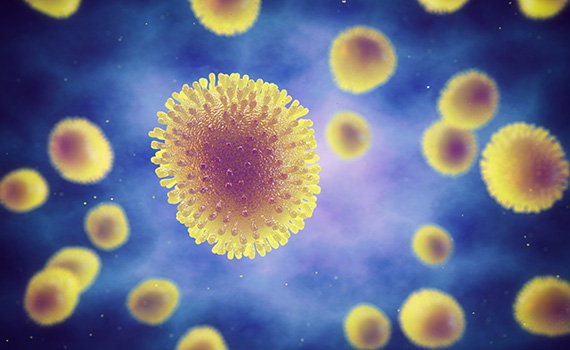Why new HPAI variants continue to emerge

The frequency of highly pathogenic avian influenza (HPAI) outbreaks is on the increase in the US with 6 of the past 8 years experiencing some form of HPAI.
Unfortunately, increased frequency paired with an unusually wide range of hosts creates a difficult combination for the US poultry industry, reported Erica Spackman, DVM, US National Poultry Research Center, USDA-Agricultural Research Service.
“Avian influenza is a virus that keeps changing, and variants emerge with different genetic and biological properties that cross to different animals,” Spackman said.
“If influenza has a mission statement, it’s here to reproduce,” she added. “It wants to propagate its genetic material. Survival of the fittest fits it well. Influenzas have been around forever, and it’s one of the first viruses described in the 1930s.”
How variants develop
One of the most important mechanisms used by a virus to generate genetic diversity is reassortment, which requires two different viruses to infect a cell at the same time. As a result, the progeny virus can have genetic characteristics of either parent, Spackman explained.
“In the current H5 outbreak internationally, the virus is reassorting and just trading out different N genes,” she said.
“There will be some that are not viable and will die out. Then there are the super flus, which are better adapting to the host.”
Another method that creates variants is the mutation process.
“What happens is the de novo generation of mutants where they pop into existence just out of errors in virus replicating,” Spackman said.
“If you pair that with selection for a new host or immunity, you almost get a filter effect where you have a narrowing of the genes, but they work better in the new system. That’s how selection occurs in tandem with the de novo.”
A third method that creates variants occurs when two genes splice together. “H7 has the most recombination and becomes highly pathogenic,” she added.
What’s happening in natural host species?
“The selection pressures are really quite limited, but they have vast genetic diversity and have occurred over time by the virus replicating for years and years in ducks,” Spackman explained.
“The virus has become adapted to the host and environment. Genetic changes do occur, but it is relatively slow and mostly random.
“All our genetic variation comes from wild waterfowl,” she added. “Those are birds carrying all the genetic diversity for flu. That even includes poultry and chickens not being natural hosts.”
There’s not a lot of data about host adaptation to influenza, but one adaption was noted from data in 2014 to 2015. The infectious dose for chickens, turkeys and ducks was lower for the high-pathogenic strain than for the low-pathogenic strain.
“The other selection pressure, natural immunity, will not be a concern for chickens and turkeys with HPAI because it will kill them,” Spackman said.
Environmental pressures on HPAI
The Achilles heel for the virus, however, is it is easily killed by environmental pressures like temperature, different substrates where it’s found and disinfectants.
“Viruses have a limited repertoire to avoid being inactivated,” Spackman said.
“Viruses don’t have the same ability to avoid things that are a problem like bacteria does. We will probably never see it evolve to get around our treatments.”
Posted on December 19, 2022
 We’re glad you’re enjoying
We’re glad you’re enjoying










